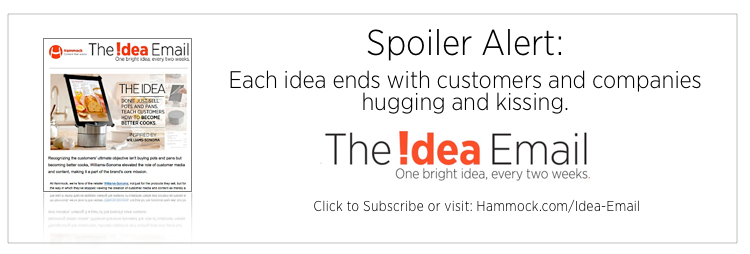
Idea: Why People Block Ads
You may already be an expert on “ad blocking,” the current controversy swirling around the corners of the web where you find those obsessed with digital marketing and media. It’s not a new topic, merely the latest chapter of a long-running debate that sprang up again when Apple released its most recent version of its mobile operating system (iOS). The newest version allows mobile app developers to sell (or give away) apps that suppress online ads in the way browser extensions have worked for years.
You gained expertise in ad blocking through countless hours of research during which you have interacted with content related to your professional pursuits or personal passions.
Your expertise is likely making you think, “I don’t recall seeing any ads on the internet!”
Your expertise has convinced you that one doesn’t need ad blocking apps when our brain already does it naturally. And our brain’s ad blocking app works offline, as well. It can filter out interstate billboards, TV ads for attorneys and full-page magazine ads warning how a prescription drug’s side effects can kill people in dozens of ways.
Your expertise has already convinced you that organizations like the Internet Advertising Bureau are misguided when they say ad blocking is highway robbery.
The only flaw in your expertise about ad blocking is your theory that people will stop and pay attention when they encounter two kinds of ads: Ads for your product and ads for your competitor’s product.
But the truth is—and you’re an expert—the types of ads that are found online don’t work. Need some proof to back up what you already know?
- The average clickthrough rate of display ads across all formats and placements is 0.06 percent. (Source: Display Benchmarks Tool)
- A January 2014 study found that 18- to 34-year-olds were far more likely to ignore online ads, such as banners and those on social media and search engines, than they were traditional TV, radio and newspaper ads. (Source: eMarketer)
- About 50 percent of clicks on mobile ads are accidental. (Source: GoldSpot Media)
- Fifty-four percent of users don’t click banner ads because they don’t trust them. (Source: BannerSnack)
- Thirty-three percent of internet users find display ads completely intolerable. (Source: Adobe)
Bottom Line for Marketers: Discovering what types of advertising work online is a journey that is just beginning. Google has shown that at least one form of advertising works: the search ad. And, as we discussed in a recent Idea Email, there is evidence that new forms of native advertising may work if they focus on help, not hype. But even if banner and display ads don’t work, the web is still the most powerful marketing tool ever conceived. It can provide countless ways to develop relationships far deeper than any advertiser-customer relationship can.
Photo: Thinkstock.com
The Idea Email is distributed free, once every two weeks, by Hammock, the customer media and content marketing company. Please share this with friends and colleagues who can subscribe here. We respect your privacy, and each mailing includes a one-click unsubscribe link. We typically feature one or more companies and organizations in each Idea Email. If any company we mention has a relationship to Hammock (as a current or former client, for example), we will include a disclosure.




